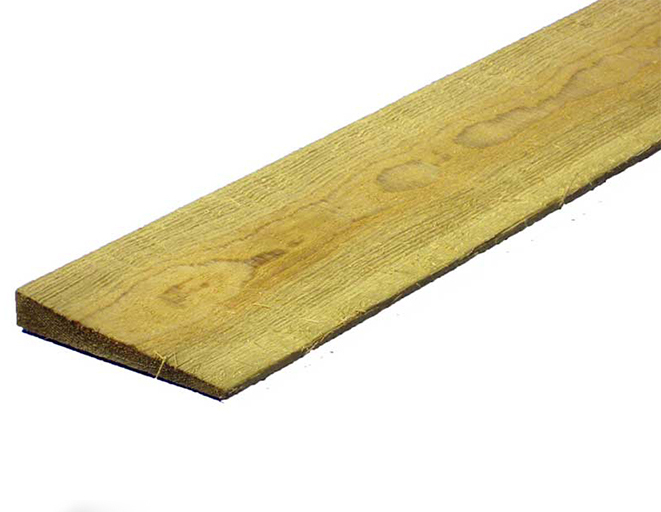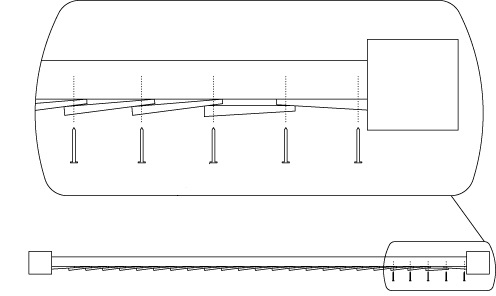
What Is Feather Edge Fencing?
Feather edge fencing, or feather edge fence board fencing, is a type of wood fence that is very popular in places like the United Kingdom, but if you’ve never been in the fence business in the UK, you might not know exactly what it is or why it’s chosen for fence projects.
In this article, we look at what feather edge fence boards are, how they are installed, and the pros and cons of feather edge fencing.
What Are Feather Edge Fence Boards?
When it comes to the question of what feather edge fence boards are, the answer really is in the name.
In this case, the feather edge refers to a taper along the vertical length of the board, which makes one side of the fence board considerably thinner than the other. So, when you look at the end of a feather edge board, it looks more like a very thin triangle than a rectangle.
How Is Feather Edge Fencing Built?
The main structure of a feather-edge wood fence is very similar to any other kind of wood fence in that you have posts, horizontal rails, and fence boards. But the installation of those boards is quite different.
As you can see in the image below, where normal fence boards are installed flush against each other (often with a few millimeters between the boards), feather edge boards are designed to overlap about 25mm or an inch before they are fastened in place.

Because the boards are tapered, you can do this without increasing the thickness (and weight of the panel) too much.
What Are the Benefits of Feather Edge Wood Fencing?
The biggest benefit of feather edge wood fencing is that, unlike fences that do have tiny slivers of gaps between boards, this really is a total privacy fence panel. The boards overlap, so there’s no chance of gaps between boards.
Feather edge wood fencing is also a very attractive style of wood fencing, and when done correctly, it will look great in your backyard or garden.
What Are the Drawbacks to Feather Edge Wood Fencing?
One of the main drawbacks to feather edge wood fencing is that because there are no gaps between the boards, wind cannot pass through this fence at all. That’s not a problem if you don’t live in a very windy area, but if you do, this might not be the right fence for you since it will act as a sail when the wind is gusting, and over time, that could lead to fence damage.
The other drawback to feather edge wood fencing is that the fence boards are installed touching each other, which can lead to moisture being trapped in the fence, and that can lead to early degradation of the fence.
To counteract this problem, ensure you’re using properly treated and prepared wood and that it’s not touching the ground anywhere to prevent capillary action. Most feather edge fence systems also include gravel boards at the bottom of the fence to help prevent moisture absorption from the ground.
Where to Find Feather Edge Fencing Installers
Since feather edge wood fencing is a popular option, many fence companies do offer this type of wood fencing. An online search is a great place to start looking for feather edge fencing installers, but you also want to make sure you get references and that you choose a contractor with experience in this type of fencing.
Like most other kinds of fence, even though feather edge wood fencing looks simple, there’s a fair amount of tricks involved in installing it properly, so you want to hire someone who knows what they are doing.


